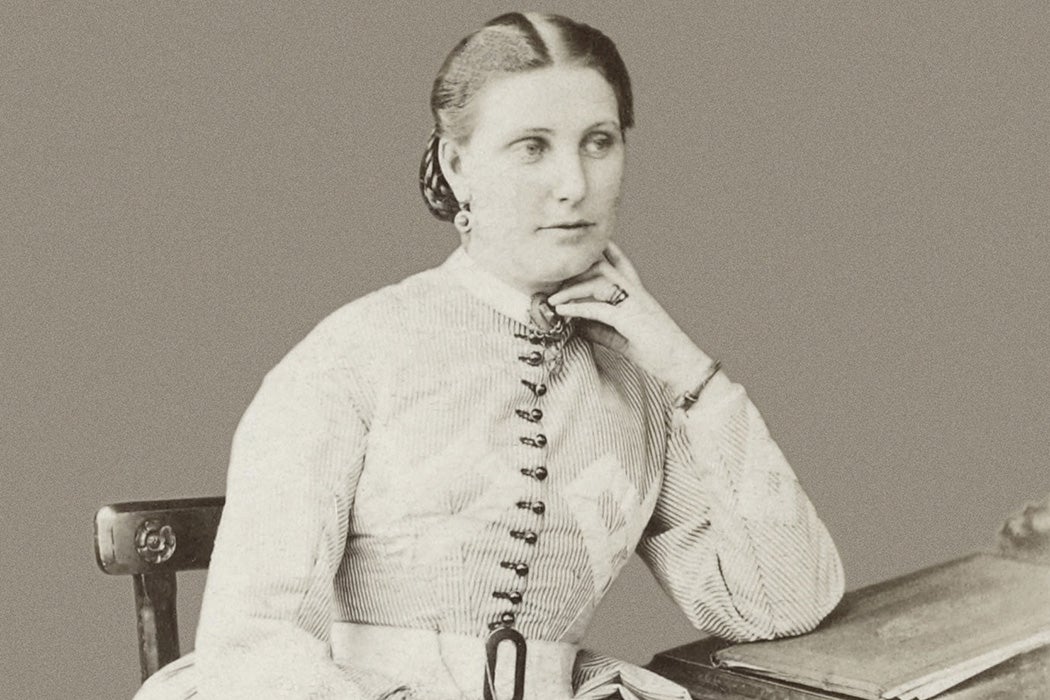“Had I been alone, it would have been no hard lot to die on the untrodden path before me; but there was one who, although my greatest comfort was also my greatest care…gladly would I have left her in the luxuries of home instead of exposing her to the miseries of Africa.”
Explorer Sir Samuel Baker’s words about his wife, Florence, paint a picture of a delicate Victorian lady. One imagines she would be happier creating watercolors and little airs on the harpsichord than exploring uncharted Africa on horseback.
The reality is that Barbara Maria Szász (as Florence was born) was probably better prepared for “the miseries of Africa” than her husband, who was born into a wealthy London family and had spent most of his adult life hunting big game. By the age of fourteen, Florence had already survived the slaughter of her parents in the Hungarian revolution, spent years in refugee camps, been kidnapped and groomed for a Turkish harem, and been sold at a slave auction.
The details remain unclear but numerous sources agree Samuel Baker attended the auction out of curiosity while on a hunting trip along the Danube. He pitied the blue-eyed blonde and attempted to buy her. Although he was outbid by the Pasha of Vidin, it seems he bribed the guards to “liberate” her…into his own bed, naturally.
Florence accompanied Samuel on two expeditions fraught with difficulties ranging from mutiny to malaria, and her knowledge of Arabic proved vital on both. The first, in 1861, was an attempt to discover the source of the White Nile (one of the two major tributaries of the Nile) but instead led them to become the first Europeans to set eyes on Lake Albert, an accomplishment for which Samuel was knighted. The second, in 1869, saw them travel to Sudan in an unsuccessful attempt to suppress the slave trade in and around Gondokor. Samuel was made Governor-General of the Equatorial Nile with a salary of £10,000 per annum, a dizzying sum in those days. Florence’s skills and work were not recognized.
Florence’s diary entries and letters to her step-daughters—edited by Anne Baker and published as Morning Star—paint a picture of a woman of extraordinary courage. On one occasion, she describes a terrifying ambush during the retreat from Masindi when she occupied herself with keeping the power dry and clutching “two bottles of brandy and two drinking cups, and two umbrellas and my pistol in my belt and a heap of other little things.”
She brushes over sufferings ranging from such severe heat stroke she was in a coma for a week to being held prisoner by tribal chiefs without complaint, and she never mentions her own contributions. In fact, we’re only aware of the time she alerted the garrison or saved the expedition from starvation by hoarding a secret supply of grain from Samuel’s writing.
Weekly Newsletter
Florence and Samuel married in secret in 1865, when they returned to London after their first expedition, and they were initially welcomed into society. However, when Queen Victoria found out how they met and that they had been living together before marriage, she banished them from court in a classically Victorian refusal to see the bigger picture.
By the time they returned from their second expedition in 1873, it seemed society was ready to forgive them—although the queen always refused to receive Florence. The Bakers settled on a small but charming estate in Sandford Orleigh, Devon, and Florence, still beautiful, became an accomplished hostess.
Although her extraordinary tenacity was never publicly recognized (it did receive brief mention in Samuel’s obituary by the Royal Geographical Society), her husband was more than aware of the importance of her contributions. When they returned to Khartoum after their four-year-long Lake Albert expedition, he wrote that he almost felt the whole thing had been a dream, except when he looked at Florence. “A witness sat before me,” he wrote,
a face still young, but bronzed like an Arab by years of exposure to a burning sun, haggard and worn with toil and sickness and shaded with cares happily now past, the devoted companion of my pilgrimage, to whom I owed success and life—my wife.
Support JSTOR Daily! Join our membership program on Patreon today.







